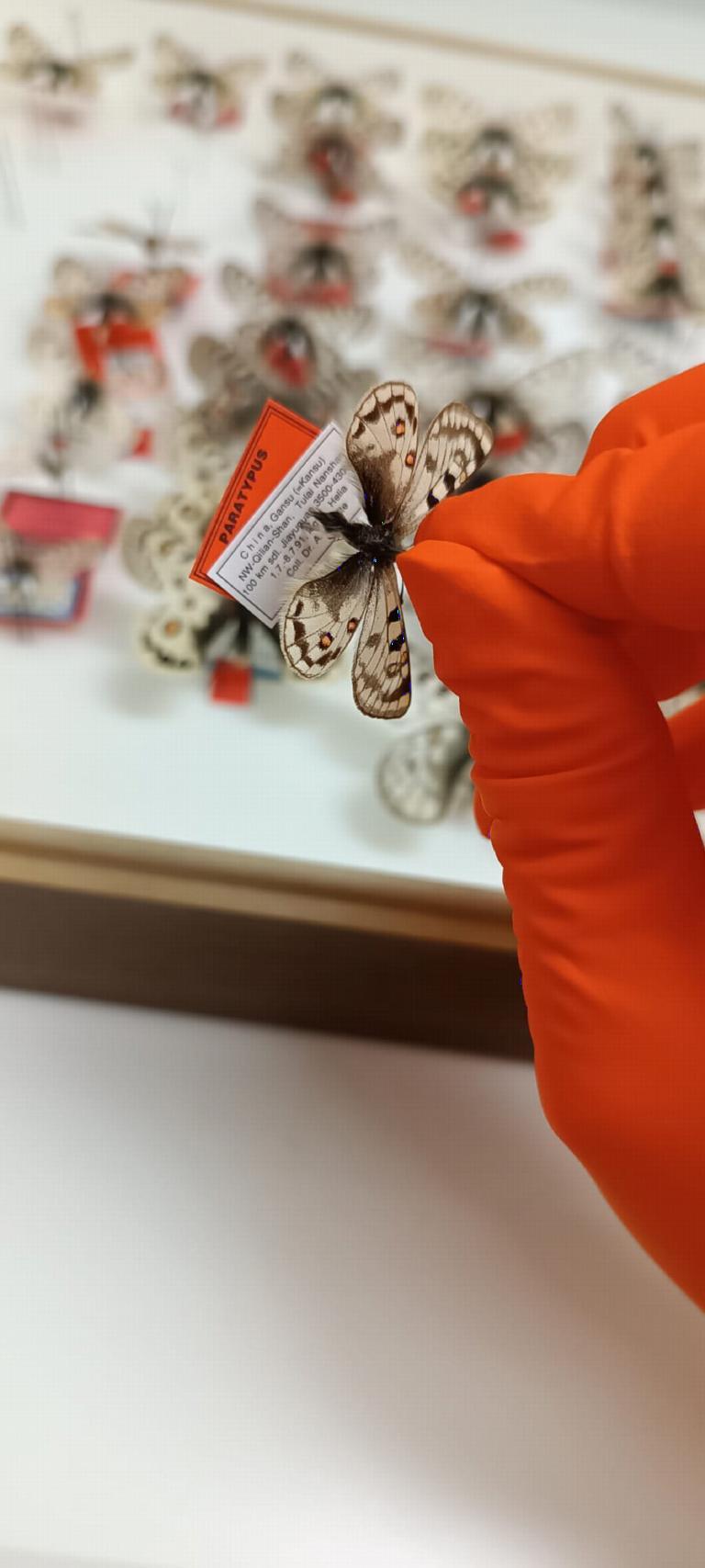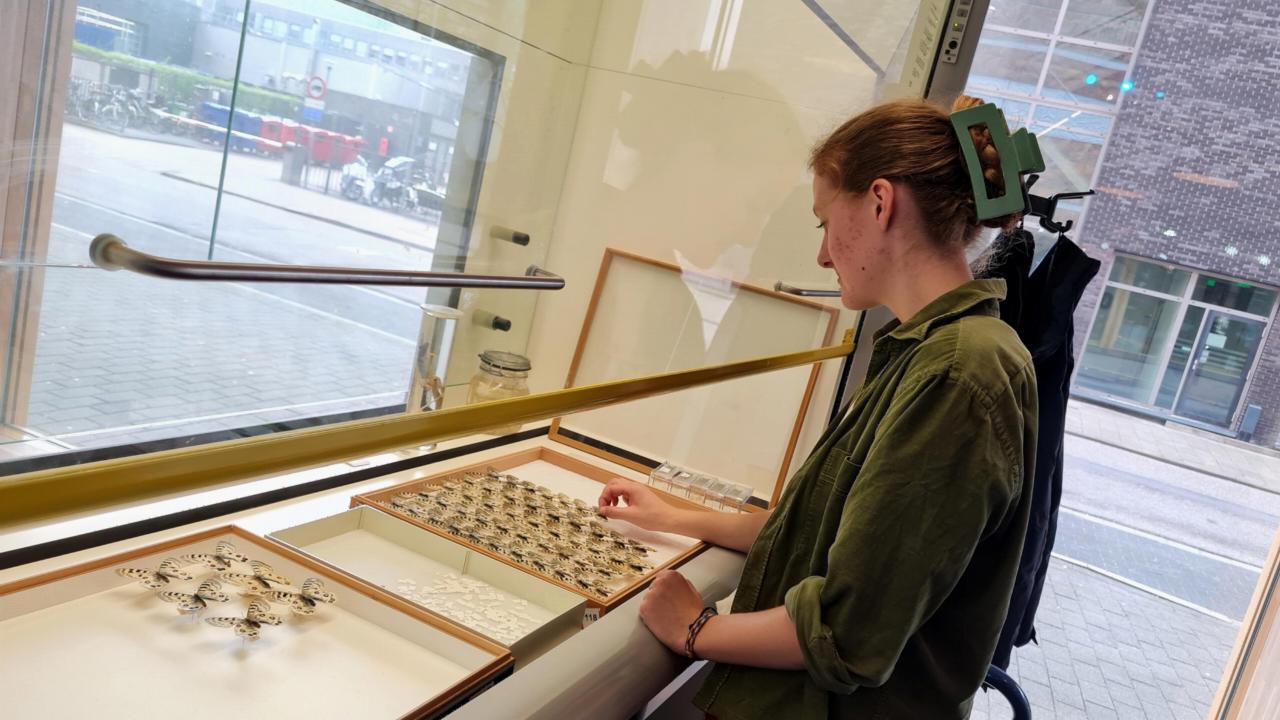
The CollAction team was deployed to transfer about 120,000 Apollo butterflies to standard drawers. This work allows these butterflies to be used in science. During this task, the CollAction-team quickly encountered some surprises.
Apollo butterflythe toughest butterfly
Apollo butterflies are the toughest among butterflies: they are found in inhospitable areas in the Northern Hemisphere, such as high in the mountains, and against the snow line. This makes them quite sturdy. Naturalis has been able to acquire a number of fine Apollo butterfly collections over time, including that of the Japanese collector Kawasaki. The CollAction team, was put to action to transfer these unusual apollo butterflies, species by species into standard drawers.
Butterfly collectionin order
About 120,000 butterflies from various collections must be transferred from fragile or obsolete drawers to appropriate drawers. These include Kawasaki's Apollo butterfly collection, and apollo butterflies from the ZMA and RMNH collections. Kawasaki's apollo butterflies are in 278 lacquered dark brown boxes, and need to be converted to standard boxes. This job provides space in the depot. Naturalis' Apollo butterfly collection is unique and world-renowned. Putting it in order will make it even more attractive to researchers.
Very wellProtected
Soon after we started the job, it became apparent that Kawasaki had protected his precious collection very well with naphthalene. This now banned “mothballing” chemicals was used to prevent insect infestation in natural history collections. There was such a smell coming out of the boxes that we were banished to our own geolab, and we started doing the work in the fume hood.
